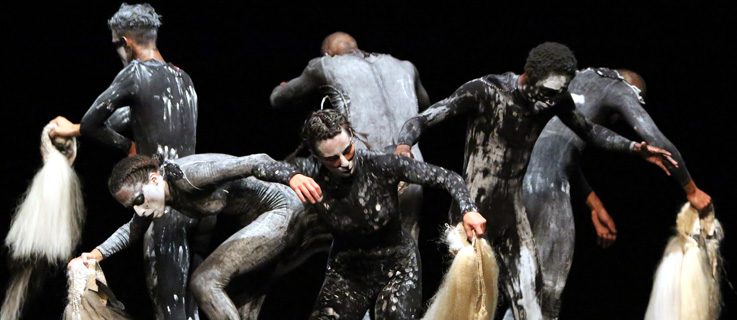For Monument 0: Haunted by War (1913-2013), the Hungarian-born performance artist, dancer and choreographer Eszter Salamon, who lives in Berlin, has culled tribal war and folk dances practiced across the globe during the last century. These dance traditions are, of course, much older, but bracketing the time frame makes sense in this creative proposition. She also clearly states in interviews that she is creating an “alternative dance history,” with the idea of “recuperating dances modern dance has tried to evacuate,” or, more simply put, “the history that the West has tried to forget.”
In this rare and uncompromising work, Salamon perceives and reshapes the historical experience as a repeatable one, relevant to the present. The functions of war dances often link to notions of heroism, political power and control, and continuity; they can serve in attack or defense, as dances of resistance, and as expressions of salutation, devotion, and healing. The dances in Monument 0 appear aggressive, violent at times, though there are more peaceful renderings as well.
-
 © Ursula Kaufmann
© Ursula Kaufmann
Monument 0
-
 © Ursula Kaufmann
© Ursula Kaufmann
Monument 0
-
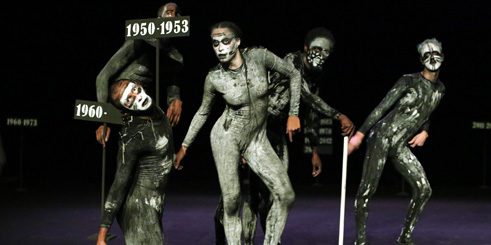 © Ursula Kaufmann
© Ursula Kaufmann
Monument 0
-
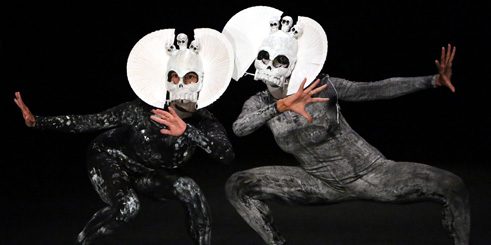 © Ursula Kaufmann
© Ursula Kaufmann
Monument 0
-
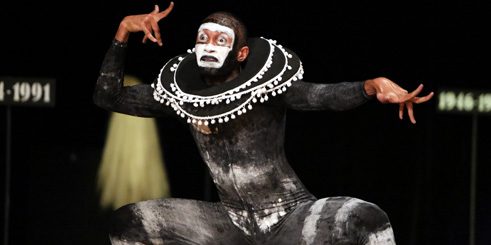 © Ursula Kaufmann
© Ursula Kaufmann
Monument 0
-
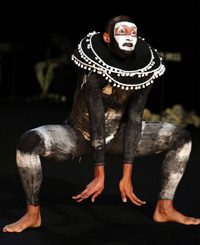 © Ursula Kaufmann
© Ursula Kaufmann
Monument 0
Most impressive is the transformation that her six extraordinary performers undergo, deeply shifting in tone and resonance as they move from one dance to the next. Wearing black and white “dance of death” costumes, masks, and makeup, by French designer Vava Dudu, Boglárka Börcsök, João Martins, Yvon Nana-Kouala, Luis Rodriguez, Corey Scott-Gilbert and Sara Tan exhibit heightened degrees of rhythmic and physical strength, and ably display the energetic investment necessary to engage in combat and war, whether in victory or mourning.
As the appropriation debate rages here in Canada, Salamon reveals in the program notes her approach to
 Eszter Salamon
| © Alain Roux
Eszter Salamon
| © Alain Roux
this contentious concept. “Appropriation is a notion linked to the history of capitalism and colonization. I do not employ it, because it leads us only to guilt and renders any form of action impossible. It locks us into impractical assigned identities.” Further, she states, “Learning the movements of others is a sensual and political act. It allows us to get beyond ourselves, to question what we have in common.”
Monument 0 shapes the culturally unfamiliar by putting forward her research and process, in essence capturing these dances, rituals, and the accompanying rhythms, in a unique presentational envelope. She’s integrating refracted ancestral memories, not artifacts, into the here and now. In this way she is connecting these dances in the continuum of existence of all communities, and recontextualizing the experience of trauma and remembrance. Considering the world’s daily atrocities, there’s much to be valued in her response to the torment of war. Her restitution of the cataclysmic past reverberates in her ensemble, and by extension, to the audience to whom it’s being offered.
